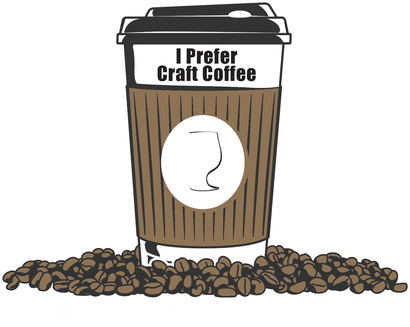How Does Cupping Help in Evaluating Top Coffee Quality?
December 14, 2024 3 min read
How Does Cupping Help in Evaluating Coffee Quality?
Imagine this scenario: You’re on a mission to find the best tasting craft coffee at home. You’ve scoured the internet, read countless reviews, and finally settled on a few bags of specialty beans. You open the package—thanks to the best coffee bean delivery option you chose—and inhale deeply. The aroma is heavenly, but how do you know if you’ve truly landed a top coffee? Enter the world of cupping, where coffee professionals (a.k.a. caffeine crusaders) use their taste buds like finely tuned instruments to evaluate everything from flavor complexity to mouthfeel. It’s like a secret handshake among coffee experts, only with slurping and spitting… but trust us, it’s a much more delightful process than it sounds.
Cupping is essentially the ultimate coffee taste test. Here’s how it works:
-
Getting Grounded: Start with freshly roasted beans—like those top coffee delivered right to your door—that have been ground to a uniform medium-fine consistency. Consistency is key here; it ensures each coffee sample is on an even playing field. If you’re hoping to track down the best tasting craft coffee online, these tests help experts sift the superstars from the snoozers.
-
Aromatic Analysis: Just as a sommelier sniffs a wine, coffee cuppers deeply inhale the aroma from the grounds. By doing this, they pick up subtle hints—think florals, fruits, or chocolate—that hint at the coffee’s quality. A standout coffee might smell like a tropical fruit basket had a secret meeting with a chocolate bar. If you’ve ever wondered why it’s worth it to order coffee online from reputable sources, these aroma clues are one reason: your nose knows.
-
Hot Water & Crust-Breaking Ceremony: Hot water is poured over the grounds and a “crust” forms at the top. After a few minutes, the cupper breaks the crust and inhales again, catching the evolving aroma. It’s a bit like meeting your coffee’s personality—first impressions matter, but so do follow-ups. Your best coffee delivered fresh should pass this aromatic charm test.
-
Slurp & Spit: Now comes the fun (and admittedly amusing) part: slurping. Cuppers aggressively slurp coffee from a spoon to spread it across their palate, evaluating taste, body, and acidity. They then spit it out. Glamorous? Maybe not. Effective? Absolutely. This method ensures that professionals can sample multiple coffees quickly, identifying subtle differences between, say, a bright citrus note and a mellow nuttiness. This fine-tuned technique helps pinpoint the top coffee you’ll want to brew at home.
-
A Score to Settle: Cuppers often assign scores based on aroma, flavor, aftertaste, body, and more. You can think of it as a coffee report card. Only the highest-performing beans—think Q-graded coffees—earn top marks. When you’ve got coffee that has been cupped and approved, you know you’re dealing with something special. It gives you confidence when you select the best coffee delivered or when you aim to have the best tasting craft coffee at home.
The reward for understanding cupping? You gain the secret powers of a coffee connoisseur, even if you never step foot in a cupping lab. By knowing how cupping works, you can appreciate why coffee professionals rave about certain beans and why certain roasters get high praise. So, when you’re sipping that freshly brewed cup—from your latest best coffee bean delivery or after you order coffee online—you’ll have a better grasp of what makes it shine. You’ll realize why some coffees taste bright and fruity while others feel velvety and chocolatey on your tongue. And that’s knowledge worth savoring. After all, you’re not just enjoying any coffee; you’re enjoying the top coffee that made the cut through a rigorous, slurpy, sniffy, and oh-so-scientific process. Now that’s something to raise your mug to!
Also in Best Coffee To Buy Online Education

Specialty Coffee Beans for Home Brewer: Why They Win
December 13, 2025 4 min read
Specialty Coffee Beans for Home Brewer: Why They Win. When you want the best tasting craft coffee at home, order coffee online for the best small batch coffee roasters. Learn why specialty coffee makes the best coffee at home and how to choose the right beans for your brewer.

Artisanal Coffee Beans Online Explained Simply
December 12, 2025 5 min read
A simple breakdown of what artisanal coffee really means and how to choose beans that make better coffee at home.

Medium Roast Specialty Coffee Beans: Why They're So Popular
December 11, 2025 4 min read
Learn why medium roast specialty coffee beans are the most popular and how to choose the right roast for better coffee at home. Remember, coffee is personal, so stick with the best tasting craft coffee at home by finding a roaster who will chat with you.
